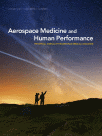
Aerospace Medicine and Human Performance
Scope & Guideline
Pioneering Research for the Future of Flight
Introduction
Aims and Scopes
- Human Performance in Aviation and Space:
The journal extensively covers the factors influencing human performance in aviation and space, including cognitive function, fatigue, and physiological responses to various environmental stresses. - Aeromedical Research and Clinical Applications:
It emphasizes the importance of aeromedical research, presenting studies that assess health risks, performance metrics, and medical interventions tailored for aircrew and astronauts. - Environmental Physiology and Safety:
Research in this journal often focuses on how environmental factors—such as altitude, microgravity, and exposure to various atmospheric conditions—affect human health and performance. - Innovations in Aerospace Medicine:
The journal highlights novel technologies and methodologies that enhance the safety and effectiveness of medical practices in aviation and space, including wearable health monitoring and telemedicine. - Policy and Regulatory Aspects:
It addresses the regulatory frameworks and policies impacting aerospace medicine, including medical certification processes and health management protocols for pilots and astronauts.
Trending and Emerging
- Space Health and Long-Duration Missions:
There is a growing emphasis on health issues related to long-duration space missions, including the physiological and psychological effects of microgravity and isolation on astronauts. - Mental Health and Well-Being:
The journal is increasingly focusing on mental health aspects, particularly in high-stress environments like aviation and space, addressing issues such as PTSD, anxiety, and cognitive performance under pressure. - Wearable Health Technologies:
The integration of wearable health monitoring devices in aerospace contexts is gaining traction, with research exploring their effectiveness in managing pilot health and performance. - Fatigue Risk Management:
There is a rising interest in fatigue risk management strategies, particularly in relation to flight operations, emphasizing the need for better understanding and mitigation of fatigue-related risks. - Diversity and Inclusion in Aerospace Medicine:
Emerging themes also include the exploration of diversity and inclusion within aerospace medicine, focusing on how factors such as gender and disability impact health and performance in aviation.
Declining or Waning
- Traditional Aviation Medicine:
There has been a noticeable decrease in research focused solely on conventional aviation medicine, particularly studies that do not integrate modern technological advancements or interdisciplinary approaches. - General Aviation Safety Studies:
Research specifically targeting general aviation safety and health issues has diminished, possibly due to the increasing focus on commercial and military aviation contexts. - Basic Physiological Studies:
Basic studies on physiological responses without practical applications or connections to operational scenarios appear to be less emphasized, as the journal increasingly prioritizes translational research.
Similar Journals

Journal of Space Safety Engineering
Shaping the future of aerospace safety through rigorous research.The Journal of Space Safety Engineering, published by ELSEVIER, is a pioneering platform dedicated to advancing the field of aerospace safety and engineering. Since its inception in 2014, this journal has catered to researchers and professionals focusing on the crucial intersection of aerospace engineering and safety, risk, reliability, and quality management. With an ISSN of 2468-8975 and E-ISSN of 2468-8967, it has established itself within the academic community, currently holding a Q3 ranking in both Aerospace Engineering and Safety, Risk, Reliability, and Quality categories, according to the 2023 metrics. The journal, which covers converged years up to 2024, is instrumental for those seeking to explore innovative safety solutions in space missions and exploration, making it an essential resource for students, industry professionals, and researchers alike. Although it is not open access, it remains a credible source of impactful studies that contribute to enhancing safety protocols and engineering practices in aerospace endeavors. With a strong focus on rigorously vetted research, the Journal of Space Safety Engineering ensures that important advancements in this dynamic and vital field are shared widely among experts and stakeholders.

Journal of Human Sport and Exercise
Connecting researchers to elevate human sport and exercise.The Journal of Human Sport and Exercise is a premier open access journal published by UNIV ALICANTE since 2006, providing a vital platform for the dissemination of cutting-edge research in the fields of Physical Therapy, Sports Therapy, Rehabilitation, and Sports Science. With its ISSN 1988-5202 and E-ISSN 1988-5202, the journal promotes high-quality research that drives advancements in human performance and well-being. The journal has an impact factor indicative of its contributions, currently categorized in Q3 for Physical Therapy, Sports Therapy, and Rehabilitation, alongside Q4 in Sports Science as of 2023. It holds a Scopus rank of #133 out of 247 in the Health Professions category, reflecting its commitment to academic excellence. With converged years from 2010 to 2024, it aims to foster a collaborative environment for researchers, professionals, and students alike, seeking to explore the intersections of sports, health, and exercise. Based in Spain, the journal's open access policy ensures that valuable research is freely available, amplifying its reach and impact across the global academic community.
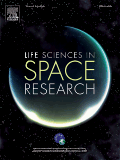
Life Sciences in Space Research
Innovating Insights for Life in Extraterrestrial EnvironmentsLife Sciences in Space Research, published by ELSEVIER, is a leading journal dedicated to advancing the understanding of life sciences in the context of space exploration and extraterrestrial environments. With a focus on interdisciplinary research, the journal addresses critical topics spanning Agricultural and Biological Sciences, Astronomy and Astrophysics, Ecology, and Health, Toxicology and Mutagenesis. Established in 2014 and set to continue through 2024, it is recognized with a solid impact factor and impressive quartile rankings—including Q2 in several categories, reflecting its influential position among contemporary scientific discourse. The journal welcomes a diverse array of research articles that delve into the implications of space travel on biological systems, innovative ecological practices for sustained extraterrestrial habitation, and critical health-related issues associated with radiation exposure. Researchers, professionals, and students will find Life Sciences in Space Research an invaluable resource for cutting-edge insights and developments in the rapidly evolving field of astrobiology and space science. For more information, please access the journal through its designated platform.
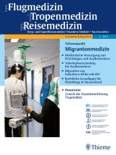
Flugmedizin Tropenmedizin Reisemedizin
Empowering practitioners with cutting-edge insights.Flugmedizin Tropenmedizin Reisemedizin is a prominent journal published by GEORG THIEME VERLAG KG, specializing in the interdisciplinary fields of aviation medicine, tropical medicine, and travel health. With its ISSN 1864-4538 and E-ISSN 1864-175X, this journal serves as a vital resource for healthcare professionals, researchers, and students who are dedicated to enhancing health and safety in the areas influenced by air travel and tropical environments. Although not currently open access, it boasts a rich repository of studies and reviews that address the latest findings and practices in these critical fields. The journal’s commitment to advancing knowledge and clinical practices makes it an essential read for those involved in travel medicine and public health initiatives, fostering an informed community of practitioners ready to tackle emerging global health challenges.
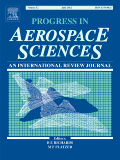
PROGRESS IN AEROSPACE SCIENCES
Fostering global connections in the aerospace community.PROGRESS IN AEROSPACE SCIENCES is a prestigious journal published by PERGAMON-ELSEVIER SCIENCE LTD, recognized as a leading platform in the field of aerospace engineering, mechanical engineering, and mechanics of materials. With an impressive history dating back to 1961, the journal covers a wide spectrum of topics pivotal to advancing aerospace technology and innovation. Its recent ranking as Q1 in multiple engineering categories underscores its significance, ranking #1 in Aerospace Engineering and placing within the top 20 percentile in both Mechanical Engineering and Mechanics of Materials, according to Scopus assessments. Researchers, professionals, and students looking to engage with high-impact research will find PROGRESS IN AEROSPACE SCIENCES an invaluable resource, offering insights into cutting-edge developments and methodologies. Although it does not operate under an open-access model, the journal upholds rigorous peer-review standards, ensuring that the published content meets the highest academic integrity. Situated in the United Kingdom, it plays a critical role in fostering international collaboration and knowledge-sharing in the aerospace sector.
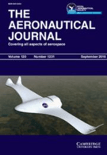
AERONAUTICAL JOURNAL
Shaping the discourse in aerospace engineering.Aeronautical Journal, published by Cambridge University Press, is a premier scholarly journal dedicated to advancing the field of aerospace engineering. With a notable impact factor, this journal holds a strong position in the academic community, ranked #53 out of 153 in the Scopus category of Aerospace Engineering, placing it in the 65th percentile. The journal has been providing a platform for groundbreaking research since its inception in 1969, and continues to be a vital resource for researchers, professionals, and students involved in aeronautics. As a Q2 journal in the 2023 Aerospace Engineering category, it offers high-quality articles that cover a range of topics within the discipline, contributing to the ongoing discourse and innovation in aerospace technologies. Although not an open-access journal, it remains accessible to a vast readership through institutional subscriptions and partnerships. The Aeronautical Journal is a crucial publication for those seeking to stay at the forefront of aerospace research and development.
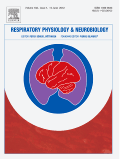
RESPIRATORY PHYSIOLOGY & NEUROBIOLOGY
Pioneering Discoveries in Respiratory Physiology and NeurobiologyRESPIRATORY PHYSIOLOGY & NEUROBIOLOGY, published by Elsevier, is a prominent journal in the fields of respiratory medicine, neurobiology, and physiology. With an ISSN of 1569-9048 and E-ISSN 1878-1519, this journal serves as an essential platform for disseminating high-quality original research and reviews that explore the intricate relationships between respiratory function and neural controls. Located in the Netherlands, it boasts an impressive standing within its field, categorically placed in the Q3 quartile for Neuroscience and Physiology and Q2 for Pulmonary and Respiratory Medicine according to the 2023 metrics. With a Scopus rank of #58 in Pulmonary and Respiratory Medicine and a robust impact factor indicative of its academic influence, the journal aims to foster advancement in understanding the physiological and neurobiological aspects of respiration. Although the journal is not open access, its content is vital for researchers, professionals, and students eager to contribute to the expanding knowledge base in these critical scientific domains.
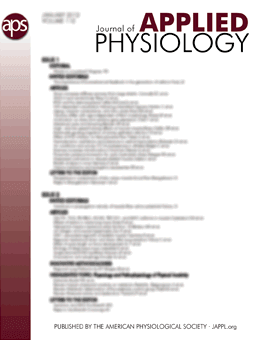
Journal of Applied Physiology
Exploring Innovations in Applied Health Sciences.The Journal of Applied Physiology, established in 1948 and published by the American Physiological Society, stands as a cornerstone in the field of physiology and applied health sciences. With an impact factor reflecting its rigorous scholarly contributions, this peer-reviewed journal ranks in the Q1 category for both Medicine (miscellaneous) and Physiology as of 2023, further emphasizing its prestige and relevance. Researchers and practitioners are drawn to its comprehensive scope, which includes physiological and biomechanical responses relevant to health, exercise, and clinical practices, making it an essential resource for advancements in sports science and medical physiology. Though it does not offer Open Access, the journal provides a wealth of high-quality research, with contributions that are crucial for understanding the complexities of human physiology. Its inclusion in Scopus ranks demonstrates a solid commitment to advancing knowledge in the field, appealing to a diverse audience of researchers, professionals, and students committed to exploring the intricate interactions between physiological processes and applied health.

JOURNAL OF THE ASTRONAUTICAL SCIENCES
Pioneering Research in the Realm of AstronauticsJOURNAL OF THE ASTRONAUTICAL SCIENCES, published by Springer Heidelberg, serves as a leading platform dedicated to advancing the fields of aerospace engineering and planetary science. With an ISSN of 0021-9142 and an E-ISSN of 2195-0571, this journal has established a significant presence within the academic community, evidenced by its categorization in the Q2 and Q3 quartiles for 2023, positioning it among the top publications in its field. The journal encompasses a spectrum of research that spans from innovative aerospace technologies to the exploration of planetary systems, reflecting its rich scope developed since its inception in 1969. Although not Open Access, it provides vital contributions to ongoing discussions in aerospace research, appealing to researchers, professionals, and students eager to deepen their understanding of astronautics. With a notable impact factor and rankings in Scopus—66th in Aerospace Engineering and 64th in Space and Planetary Science—this journal continues to be a pivotal resource for those engaged in the exploration and utilization of space.

AEROSPACE AMERICA
Exploring Innovations in Aeronautics and BeyondAerospace America, published by the American Institute of Aeronautics and Astronautics, stands as a crucial platform within the field of aerospace engineering. With over 30 years of dedication to advancing aerospace knowledge, the journal provides a comprehensive exploration of topics ranging from cutting-edge aerospace technology to aviation policy and industry developments. While it currently resides in the fourth quartile of the Scopus rankings for aerospace engineering, the journal aims to enhance its visibility and impact among researchers, professionals, and students. Access to its content is traditionally through institutional subscriptions, aligning with its mission to foster informed discussions and innovations in aerospace. As professionals and academics navigate the evolving landscape of aeronautics, Aerospace America remains a pivotal resource for those committed to the future of aerospace exploration and technology.